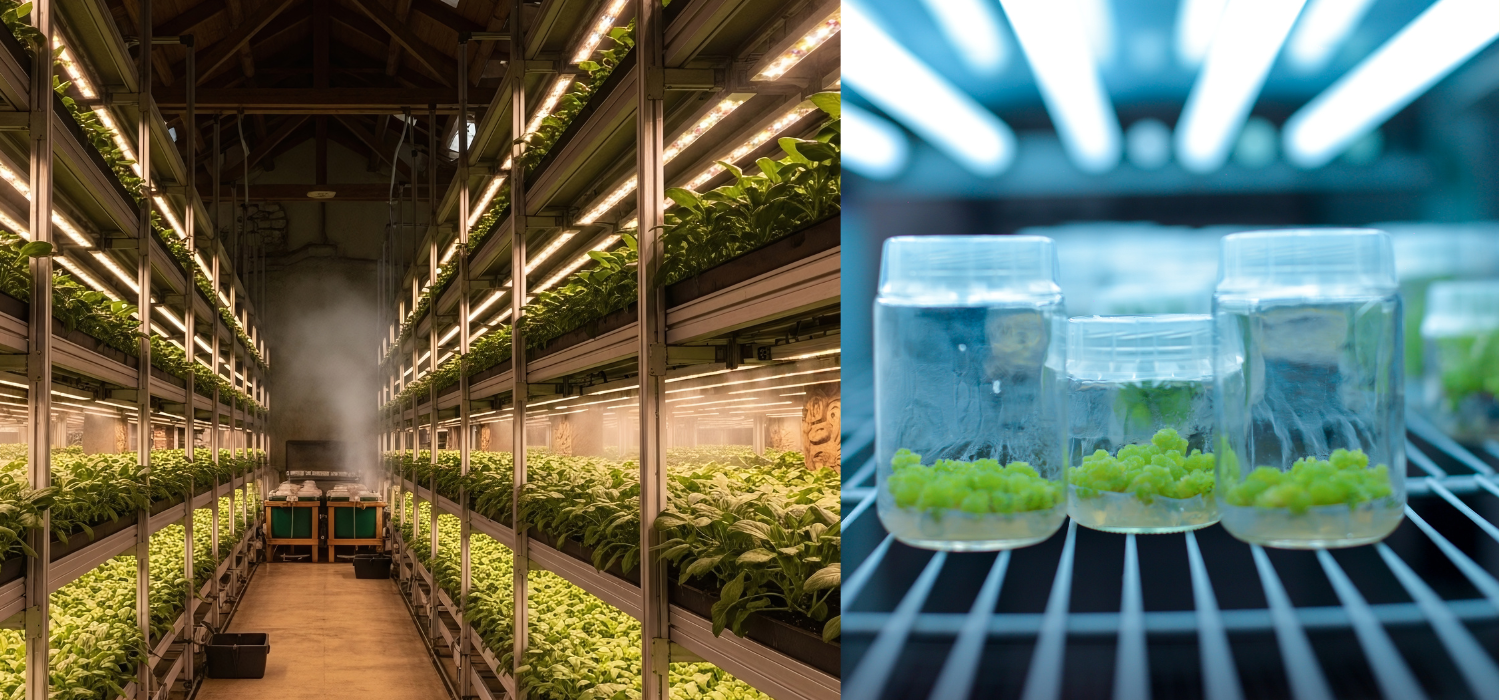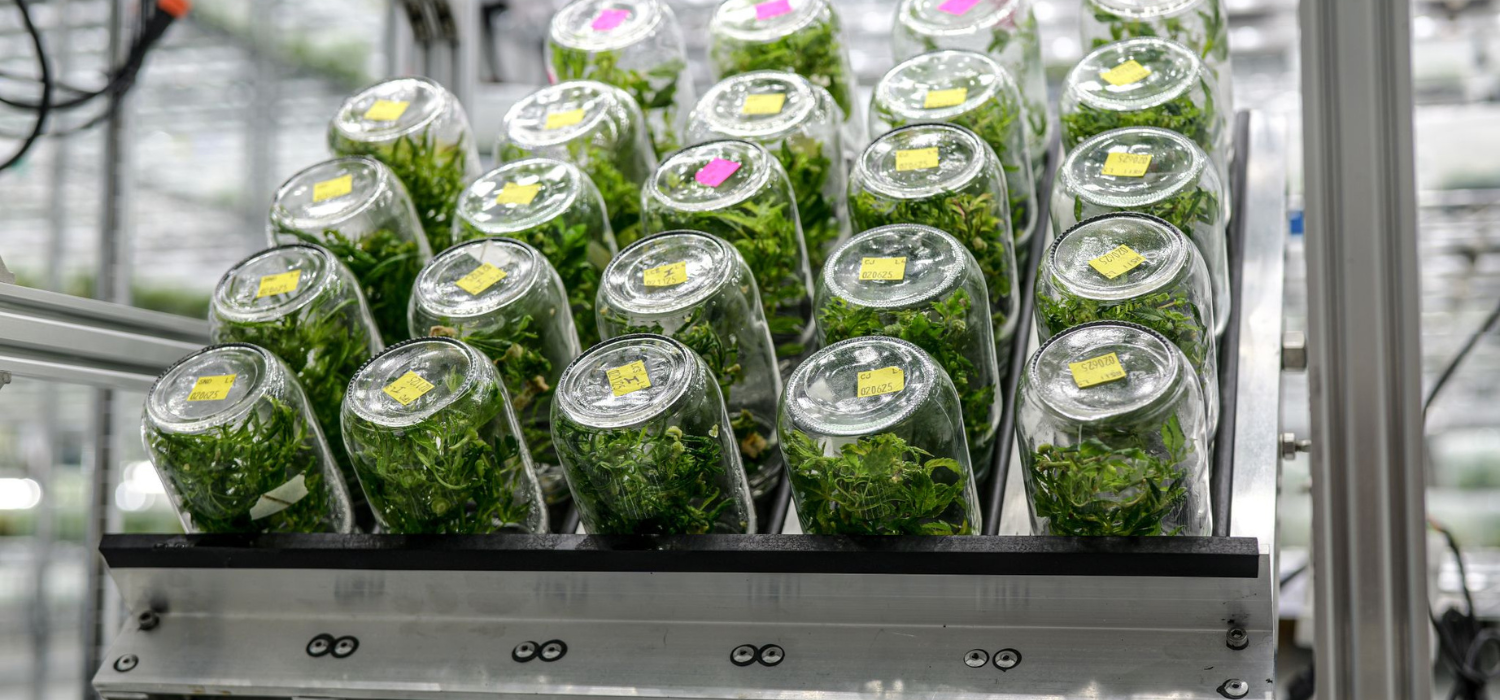
An Efficient Protocol For The Micropropagation of Vanilla
As a content and community manager, I leverage my expertise in plant biotechnology, passion for tissue culture, and writing skills to create compelling articles, simplifying intricate scientific concepts, and address your inquiries. As a dedicated science communicator, I strive to spark curiosity and foster a love for science in my audience.


Vanilla is a genus of plants belonging to the family of Orchidaceae or Orchid family. It’s a member of the group of climbing orchids. The flavoring agent obtained in front of the plant is extracted from the pods of their pods.
Introduction
What comes to your mind when you hear “vanilla”?
If you ask me, it’s always flavor. And, that too “ice cream”.
It was one of my favorite ice cream flavors that I used to buy after school in summer (nothing soothed my heart against the 2 PM burning sun).
But, have you ever wondered where the flavor comes from? From where and how is it obtained?
The question kept boggling my head. And, then I learned it’s about the “Vanilla plant”!
Vanilla is a genus of plants belonging to the family of Orchidaceae or Orchid family. It’s a member of the group of climbing orchids. The flavoring agent obtained in front of the plant is extracted from the pods of their pods.
The commercially available vanilla beans are obtained from the cured unripe fruit of Tahiti vanilla (V. tahitensis), Mexican or Bourbon vanilla (Vanilla planifolia), and occasionally West Indian vanilla (V. pompona). They are mostly found in Mexico, Central America, and Central South America regions.
By the end of this article, you will learn more about the Vanilla plant, its cultivation, and in vitro propagation techniques.
Here’s a Bit About Vanilla Plant
Vanilla plants have aerial rootlets, attached to the trees and supporting long fleshy climbing stems. Though the plant can also be grown in wood, plantation, or shader, however, it grows to a higher height when grown alone.
The plant has fewer flowers, ranging in colors from pale green, and yellow, to white. The vanilla flavor is obtained from the fruits of the plants. This occurs after its pollination by small bees. The artificial pollination is performed on the plant by using a wooden needle as soon as they open. The fruit is in the shape of a long capsule, increase up to 20 cm in size, and the unripe pods are harvested as soon as they turn golden-green at the base.
The vanilla fruits (also called beans) have no smell or aroma. Inside the pods an oily liquid full of tiny seeds are present. They are used in dishes and can be observed as black specks.

Figure: A detailed diagram of the Vanilla flower.
Propagation of Vanilla Plant
Vanilla plants are commonly grown in Mexico, Indonesia, Madagascar, Tahiti, Hawaii, and other tropical locations. They can be cultivated either using seeds or plant cutting. Before cultivating the plant you need to ensure the following factors:
- Propagation environment: Tropical environments are favorable for the Vanilla plants. But if you don’t live in a tropical area build a greenhouse and cover the structure with UV-stabilized polyethylene or fiberglass or add glass panels
- Temperature: The Vanilla plants thrive well in the environment with the daytime temperature ranging between 80–85 °F (27–29 °C) and nighttime temperature between 65–75 °F (18–24 °C).
- Humidity: The vanilla plants require high humidity for their proper growth and development. Generally, 85% humidity is required to be maintained for the plant.
Tissue Culture of The Vanilla Plant
Vanilla is the second-most expensive spice in the world (after saffron). The compound vanillin, extracted from the Vanilla plant is used for many applications including flavoring ice cream, candies, soft drinks, baked goods, oleoresins, and condiments.
On annual basis, Vanilla is produced by about 3500 tonnes, along with 3000 tonnes in the USA.
The increasing demand for natural Vanilla requires speedy production of the plant for commercial purposes. However, the conventional or traditional approach is not the most suitable method to achieve the target. The traditional methods are inefficient, labor-intensive, and time-taking. Hence, the tissue culture method is adopted to serve the purpose.
Tissue Culture Procedure of Vanilla planifolia
The given procedure is taken from the study of Hilda E. Lee-Espinosa, Joaquín Murguía-González, Benjamín García-Rosas, and Ana L. Córdova-Contreras (2008). In Vitro Clonal Propagation of Vanilla (Vanilla planifolia ‘Andrews’). American society for Horticulture Science Journal, Volume 43: Issue 2. DOI: https://doi.org/10.21273/HORTSCI.43.2.454
Explant Preparation
- Collect the nodes from the Vanilla plant.
- Excise auxiliary bud from the nodes of 3-5 mm in diameter.
- Disinfect the excised buds using surfactant solution (1 to 2 drops of Tween-20; ICI Americas; in 1 L distilled water).
- Wash the excised buds under a slow flow of tap water for about 45 minutes.
- Wash again in a bit higher water flow than before for the next 10 minutes.
- Submerge the buds in commercial sodium hypochlorite (6% active chlorine) diluted at a concentration of 5% (v/v) for 10 min.
- Rinse the buds 4-5 times using sterilized distill water containing 150 mgL−1 citric acid and 100 mgL−1 ascorbic acid.
Shoot Induction and Proliferation
- Prepare Murashige and Skoog (MS) media supplemented with 100 mgL−1 myoinositol, 150 mgL−1 citric acid, 100 mgL−1 ascorbic acid, 20 gL−1 sucrose, and 5 gL−1 agar-agar.
- Adjust the pH to 5.7 before autoclaving at 1 kgcm−2 for 15 min and 120 °C.
- Add 20 ml of the prepared media to each culture vessel.
- For shoot induction, add 9.55 μM 6-benzylaminopurine (BA) and culture the explant in the same media.
- After 30-45 days, transfer the buds to a proliferation media (prepared the same as induction media but with the addition of 4.45 μM naphthalene acetic acid (NAA).
Rooting
- Prepare the rooting medium with half-strength MS medium supplemented with 0.44 μm NAA, 100 mgL−1 myoinositol, 20 gL−1 sucrose, and 5 gL−1 agar-agar.
- Subculture the 2-3 cm plants to the prepared rooting medium.
Acclimatization
- Wash the plants of up to 5 cm in height in running tap water to remove stuck culture medium.
- Transfer the plants to the potting medium (peat moss and agrolite, 1:1) for their acclimatization in the greenhouse.
- Maintain the conditions at 30 °C temperature with high relative humidity (≈90%) and a 16/8 h photoperiod (87.8 μmolm−2 s−1).
How Plant Cell Technology Is Helping Culturists Worldwide In Their Tissue Culture Application?
Plant Cell Technology is helping tissue culturists around the world by providing unique and world-class products and services that smoothen their process. It has MS media, agar, gellan gum, Plant Preservative Mixture (PPM), culture vessels, Biocoupler (TM), and masks in its store to facilitate your processes.
And, that’s not it! Plant Cell Technology also offers consultation services to culturists of all sizes that help to get instant solutions to your tissue culture problems.
So, visit www.plantcelltechnology.com today and find out more about our product and services and how they help you to excel in your tissue culture processes.
Happy Culturing!!
Blog Categories
View by Level
Popular Blogs

How Tissue Culture Supports Vertical Farming and Urban Agriculture?
Introduction If you've ever seen a large-scale vertical farm, with its towering racks of perfect, vibrant greens, you might wonder...
Read More
How Bioreactors Are Revolutionizing Large-Scale Micropropagation?
Introduction Have you ever wondered what the secret is to producing thousands, or even hundreds of thousands, of identical, healthy...
Read MoreSubscribe to Our Newsletter







Join the conversation
Your email address will not be published. Required fields are marked